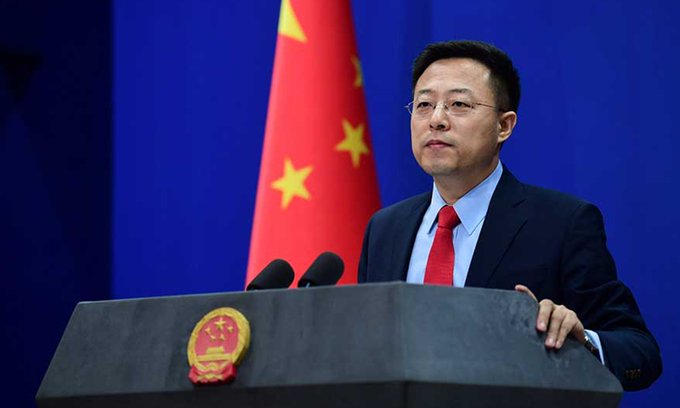Ladakh has long been a flashpoint between India and China and amid flaring tensions between the two nuclear-armed neighbours Beijing has again raised its claim on Arunachal Pradesh calling it a part of “South Tibet region”.
In a press conference, answering the question about reports of five missing Indian youths from the Indian state of Arunachal Pradesh, Chinese Foreign Ministry Spokesperson, Zhao Lijian, said that “the Chinese government has never recognized the so-called “Arunachal Pradesh” illegally established on the Chinese territory. I’m not aware of the situation you mentioned.”
As reported earlier by EurAsian Times, Congress MLA from Arunachal Pradesh Ninong Ering had claimed that five youths were abducted by China’s People’s Liberation Army (PLA). Ering also stated that the five people had gone for fishing when they were abducted by the Chinese Army.
Union Minister Kiren Rijiju responded to a journalist’s tweet on Sunday asking about the update on the five Indians that are reportedly abducted by the PLA. Rijiju said “the Indian Army has already sent hotline message to the counterpart PLA establishment at the border point in Arunachal Pradesh. Response is awaited.”
Currently, the two nuclear-armed neighbours are involved in a dangerous standoff in the eastern Ladakh after a violent clash broke out at the Line of Actual Control (LAC) in the Galwan valley that resulted in 20 Indian casualties.
As per other reports, Chinese PLA troops had engaged in provocative action at least twice in the last two weeks in the south bank of Ladakh’s Pangong Lake. However, the Indian army was able to “prevent these attempts to unilaterally alter the status quo” at the LAC, the Foreign Ministry had said, emphasizing that there were no physical clashes between the two sides.
On Monday, the PLA’s Western Theater Command spokesperson Col Zhang Shuili had accused Indian troops of “outrageously firing shots on Chinese border patrols soldiers who were about to negotiate,” the Communist Party-run Global Times newspaper reported.
Under 1996 bilateral agreement signed by both sides, “neither side shall open fire or conduct blast operations within 2 km of the Line of Actual Control”.

INDIA-CHINA BORDER CONFLICT
PLA had accused India of violating the agreement. Indian Army responded saying that Chinese troops fired shots in the air as an intimidation tactic and attempted to close in on an Indian position in eastern Ladakh a day earlier as it rejected charges by China’s PLA that it transgressed across the Line of Actual Control (LAC). The Indian Army has also called the statement by the PLA as “an attempt to mislead their domestic and international audience.”
For the first time in 45 years, shots were fired at the LAC. The move to reclaim the territory of Arunachal Pradesh could further escalate the tensions extending the flashpoint from the current LAC in eastern Ladakh to the McMohan Line in Arunachal Pradesh. Both the sides have been trying to disengage through military and diplomatic channels but there hasn’t been much success.
However, this isn’t the first time that China has laid claim on Arunachal Pradesh. In February, Beijing had objected to Union Home Minister Amit Shah’s visit to Arunachal Pradesh to attend a 34th Statehood Day function.
“China’s position on the eastern sector of the China-India boundary, or the southern part of China’s Tibet region, is consistent and clear. The Chinese government has never recognized the so-called Arunachal Pradesh”, Geng Shuang, the then spokesperson of the Chinese Foreign Ministry, said at a media briefing.
The Indian Ministry of External Affairs (MEA) shot back saying that Arunachal was an “integral, inalienable part” of India and added that “objecting to a visit of any leader of India to Arunachal Pradesh does not stand to reason and understanding of India”.
This time the Chinese reaction comes at a time when the Defence Ministers of two sides met in Moscow to ease up the tensions between the two countries on the Line of Actual Control (LAC) in Ladakh.
According to the McMohan line drawn by British India in 1938, Arunachal Pradesh falls within the Indian territory. Although China continues to claim the territory as part of Tibet which it had occupied in 1951. “We should not take account of Line of Actual Control (LAC), instead we should only recognise the McMahon Line,” said Eastern Arunachal Member of Parliament (MP) Tapir Gao.
“In a conversation with Jaswant Singh, former Defence/Finance minister, who was serving as an Army captain in Arunachal Pradesh during 1964-66, he told me that Indian Army had eight camps beyond Ashafila and each camp had at least 5 to 8 km distance. But now, we cannot even claim Ashafila,” added the MP.
In a report by IANS, China had included parts of Arunachal Pradesh within its international boundaries, an updated version issued by Sky Map had revealed. Sky Map, China’s authority on digital maps, is constructed and operated by a unit directly under Beijing”s National Surveying and Mapping Geographic Information Bureau.
































